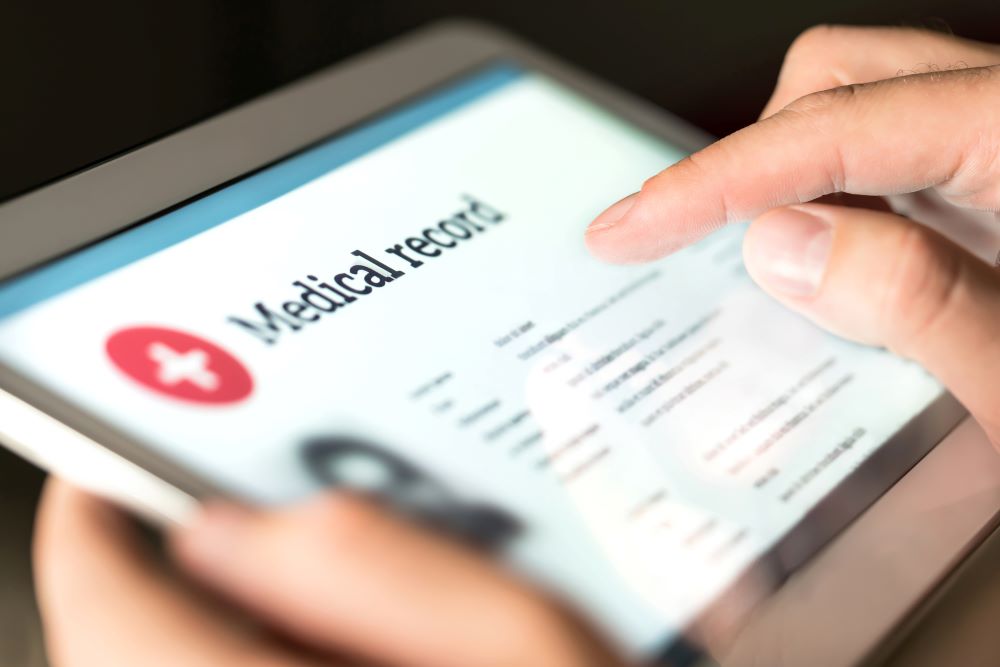Houston’s healthcare providers require more stringent patient data protection than many other office settings. This means it’s essential to choose the right office equipment for an efficient and HIPAA complaint healthcare workflow. With so many challenges facing the office staff of a hospital or doctor’s office, implementing the right technology is the best way to stay on top of it all. Here’s what healthcare providers and office managers need to know about office equipment selection.
Workflow Challenges Healthcare Providers Face
Strict compliance with HIPAA is the biggest challenge facing most of Houston’s healthcare providers, but it’s far from the only one. Patient records and test results can stack up quickly to generate excess paper, making it hard to manage and organize the sheer volume of material. Digitizing requires secure apps designed for handling patient data since it creates new opportunities for theft or loss. Traditional faxing methods are not secure and take a long time, delaying rapid action in urgent care centers and hospitals. Finally, healthcare providers also need secure access to transmit documents and messages over many different and often separate networks.
The right office equipment can solve all of these problems and more. Yet the wrong devices could increase the risks of failing compliance checks and losing valuable records. Look for office equipment designed to address the challenges of healthcare to ensure compliance and a smoother workflow.
How Office Equipment Enhances Patient Security
Using the right office equipment that integrates with secure data handling applications is the best way to reduce paper volume, prevent data loss, and control repetition. Moving paperwork into the digital format prevents unauthorized access in person, and as long as the app is secure, it prevents remote access as well. HIPAA compliance relies on the use of equipment and software that maintains a high level of patient security and anonymity. Using software or apps that aren’t explicitly HIPAA compliant can result in a loss of trust from patients, not to mention fines from regulators.
Choose office equipment like copiers and printers that can also connect to secure apps for data storage. Digitized records are easier to send and receive than traditional fax while also maintaining a higher level of security with the right tools. By integrating with an electronic health records (EHR) system, these pieces of office equipment enhance total data security rather than compromising it. Since moving, securing, and checking physical patient records can generate hundreds of hours of extra work per year for a healthcare provider’s office staff, switching to digital records can dramatically reduce the workload while improving security at the same time.
Working with apps and equipment developed by the same company also reduces the need for IT help to set up and use the system. The apps and office equipment are designed to work together as seamlessly as possible without creating risks of data loss. When using apps and equipment from different companies, it’s often difficult or even impossible to get a secure connection unless there’s existing compatibility. With the right combination of patient data apps and EHR systems, a doctor in one practice can transmit all the relevant test results and records to a specialist in another country with just a few taps.
How Xerox’s Healthcare MFP Solution Can Help
A multi-function printer (MFP) is the ideal way to manage patient data throughout a Houston healthcare provider’s office. In small offices, compressing so many printing and secure scanning functions into a single device saves space. The Xerox Healthcare MFP solution, in particular, is designed to connect each office with an entire community of care in a secure and HIPAA compliant way. This is due to its use of the secure and interoperable Direct Exchange patient record system. Anyone working with providers who aren’t using this system can still receive traditional faxes from the same MFP. No matter who needs a patient’s records, the MFP makes it possible to send the information directly from the device or through its interconnected Share Patient Information app.
The MFP from Xerox goes beyond just securing the data and digitizing it for easy sending. It also allows you to create specific file types, two-sided documents that will print as intended, and attach secondary documents to fill out a request. Even non-patient information that needs to reach another provider is easily sent through the MFP. With the copier style EHR scanning process, this MFP also dramatically speeds up adding old paper records. Officer workers need less specialized training to properly digitize data since the MFP handles so much of the identification and organization work. Scanning a paper document is as easy as using a copier, making it a process more team members can join in on. Reviewer settings ensure that any new documents added to the EHR system are verified by a higher-level manager before it is updated. With different levels of access for various office employees, it’s easy to control access and maintain a high level of patient confidentiality.
With such powerful healthcare office equipment available from Xerox, there’s no reason to deal with paper records or complicated methods of digitizing them. Add your backlog of patient health information to your EHR with the help of the Xerox Healthcare MFP, then transmit patient data through it to a provider in your community of care. With so many functions in a single piece of office equipment, the team will find their workflow significantly streamlined. To learn more about adding our Xerox healthcare office equipment to your Houston office, contact On Demand today.
